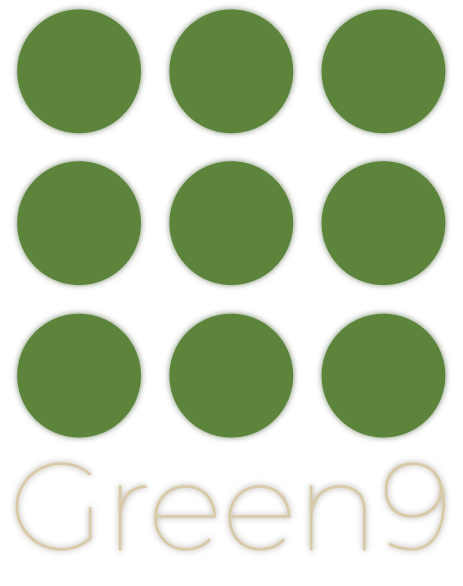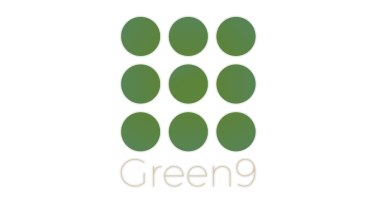Workshops + Courses
Category
Green9About This Project
Courses, workshops and CPD training events on “Sustainable Cities”
Education is key!
Green9 are committed to discussing, debating and developing ideas about how sustainable cities may be achieved.
Green9 are also committed to this being a multinational multi disciplined discussion that draws upon local cultural knowledge from all corners of the earth.
To facilitate these discussions, Green9 organize international courses on “Sustainable Cities”
Given the global situation of population rise, resource depletion and climate change it has become critical to our survival that our lifestyle habits fundamentally change in order to ensure a sustainable future where our demands for food, fresh water and energy are met.
The “Sustainable Cities” course attempts to demystify “sustainability” and explore the fundamentals of city planning, community engagement, and resource management with particular focus on the impact of advanced technologies on city farming ((hydroponics and aquaponics), water conservation, energy production and waste management. As part of the course the participants are guided round cities and communities at various scales in London, Manchester, Nottingham, Cambridge and Whitstable. (City locations may vary).
Specific visits range from a biosphere and microbrewery in Manchester, Hydrogarden in Coventry, Centre for Alternative Technology in Wales and an anaerobic digester at Cranley Wildlife Park in London.
Visits are particularly focused on community city farms, cooperative developments and Centre’s of research into aquaponic and hydroponic farming.
Oh and by the by, numerous examples of Excellent Architecture (of different eras) and excellent city planning are experienced as we walk from place to place.
The two-week courses are held throughout the year, and are also delivered as a series of separate daily CPD events that together form the total package on “Sustainable Cities”.
The course contains a rich series of talks, visits and demonstration workshops by a talented, knowledgeable and experienced collection of experts.
Note: – Subject to discussion, the course may be adjusted to suit a particular academic institutions specific curriculum agenda and dates.
Two key questions run through the two-week course.
1 How will we provide the basic supplies of food, fresh water, and energy (“nexus“) as world population escalates towards 9 billion by 2050?
2 How will digital and communication technological advances impact on our world, our lifestyle habits and help us design Sustainable environments at both the macro and micro scales? (We introduce and teach the first basic steps of BIM to those who request it, but we also discuss, debate and explore the potential of BIM, specifically what part “BIM level 3″ should take in helping us create truly sustainable cities.)
The water, energy and food security nexus means that the three sectors — water security, energy security and food security — are inextricably linked and that actions in one area more often than not have impacts in one or both of the others.
These linkages have always been present, but as the world population escalates towards 9 billion (2050) with increasing demands for basic services and continued improvements in living standards, the need for more conscious stewardship of the vital resources required to achieve those services has become urgent.
Water security is defined in the Millennium Development Goals (MDGs) as “access to safe drinking water and sanitation”, both of which have recently become a human right. While not part of most water security definitions yet, availability of and access to water for other human and ecosystem uses is also very important from a nexus perspective.
Energy security has been defined as “access to clean, reliable and affordable energy services for cooking and heating, lighting, communications and productive uses” (United Nations), and as “uninterrupted physical availability of energy at a price which is affordable while respecting environment concerns”.
Food security is defined by the Food and Agricultural Organization (FAO) as “availability and access to sufficient, safe and nutritious food to meet the dietary needs and food preferences for an active and healthy life” Adequate food has also been defined as a human right.
The emphasis on access in these definitions also implies that security is not so much about average (e.g., annual) availability of resources; it has to encompass variability and extreme situations such as droughts or price shocks, and the resilience of the poor.
Each day of the course has a short talk followed by discussion on a particular theme.
Each of these themes has at least one visiting guest “ expert” joining the workshop to set the scene and steer the discussion in an appropriate direction.
Nick Schumann, Hans Haenlein, Stephen Brice, Colin Tudge, Penny Poyzer, Stephen Fry, Chris McCarthy, Roger Seijo, Jodie Willis, Melanie Nelson, Simon Fernandez, Danny Yang Martinez
The sessions are coordinated by Howard Gilby
Themes are subject to change but may be as follows: -
Birth of Cities, Dead Cities, Sustainable Cities, Global Mega Cities, Measured City, Hungry City, Thirsty City, Energized City, Cleansed City, Funded City
“Birth of Cities” looks at the origins of cities and how early civilizations organized themselves and their surroundings in order to maintain the essential resources for living.
“Dead Cities” looks at many cities in History that were abandoned largely due to human mismanagement of their basic resources for living.
“Sustainable cities” looks at cities that were planned and still survive today, and we look at contemporary new city plans and debate how successful they may or not be, (Dongtang, Masdar City, Hammarby)
“Global Megacities” looks at urban sprawl, suburbia, and the role that advances in digital communication systems may have on the way cities continue to grow and on the regeneration of ancient Cities.
“Measured City” looks at the city in terms of numbers. Sizes of communities, sizes of buildings, squares, walking distances and generally explores the ancient understanding of cities being planned in harmony with human dimensions. A city seen as a living organism, an extension of human species.
“Hungry City” looks at the complexities of cities producing enough food to feed the expanding population. How this was achieved in history, and how it is being achieved now, and how it might be achieved in the future as we struggle will increased number of extreme climatic events, together with a decrease in available local fertile land, and an increasingly discerning population, concerned at the freshness and nutritional qualities of the available food.
“Thirsty City” focuses on the importance of water in the planning of cities, both in terms of proximity to the oceans for transport and trade, and in terms of a plentiful supply of clean fresh water to drink. We look at how ancient cities planned their cities around water, Angkor Wat, Marrakesh, Teoteotihuacan, Venice, Nimes, we look at Ports, Rivers, Canals and how cities may once again embrace the water despite the threats from sea level rise.
“Energizing the city” focuses on energy, more specifically renewable energy and on the latest technological breakthroughs. We speculate how these new energy sources may generate the creation of complete new cities.
“Cleaning the city” looks at the complex issues surrounding waste, how to reduce it, how to get rid of it, and how to capitalize on it.
“Funding the city” looks at the economics of sustainable cities, from how we acquire, own or share property, to issues of trade, (fair trade) and the issues surrounding entrepreneurial small businesses.


